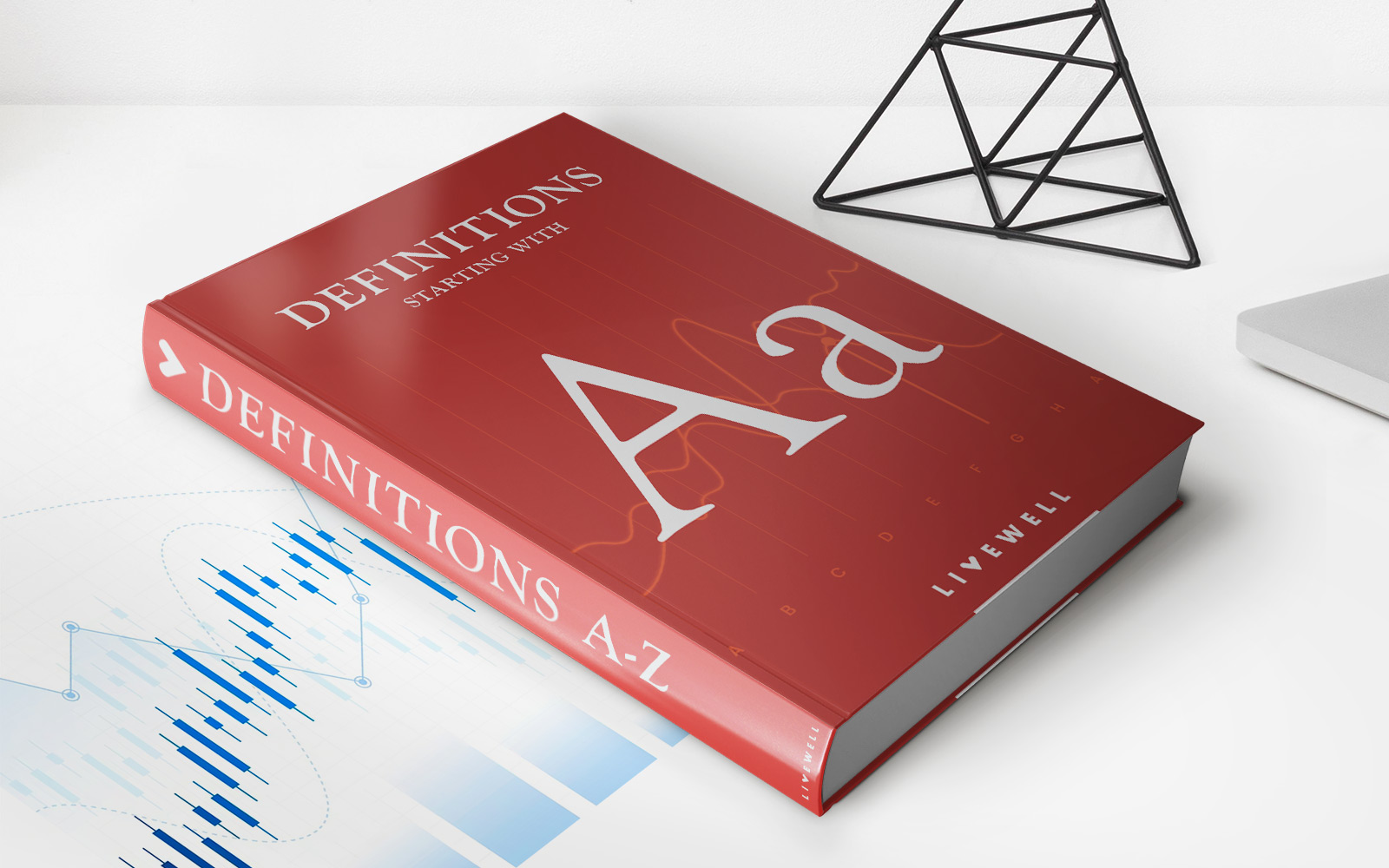

Finance
What Is A Student Loan Disbursement?
Published: November 3, 2023
Learn about student loan disbursement, a crucial step in the financing process for students. Understand how funds are distributed and managed to cover educational expenses.
(Many of the links in this article redirect to a specific reviewed product. Your purchase of these products through affiliate links helps to generate commission for LiveWell, at no extra cost. Learn more)
Table of Contents
Introduction
Student loans have become an essential part of financing higher education for many students. These loans bridge the gap between the cost of tuition and other educational expenses and the funds that students and their families can afford to pay out of pocket. However, the process of obtaining and managing student loans can be a complex one, with various stages involved. One critical stage in this process is the student loan disbursement.
Student loan disbursement refers to the release of funds from the lender or the financial aid office to the borrower, which in this case is the student. This disbursement typically occurs after the loan application has been approved and the student has accepted the terms and conditions of the loan agreement. The disbursement can be thought of as the actual transfer of funds from the lender to the educational institution or directly to the student, depending on the type of loan and the specific circumstances.
Understanding how student loan disbursement works is crucial for students, as it affects their ability to pay for tuition, accommodation, textbooks, and other educational expenses. In this article, we will delve deeper into the concept of student loan disbursement, discussing how it works, the different types of disbursements, the timing involved, and what happens after the disbursement is received.
Definition of Student Loan Disbursement
Student loan disbursement refers to the process of releasing funds from the lender or the financial aid office to the borrower, who is the student. It is a crucial stage in the student loan process, as it marks the actual transfer of funds that are borrowed to cover educational expenses.
When a student applies for a student loan, whether it is a federal loan, private loan, or institutional loan, they are approved for a specific loan amount based on their financial need and eligibility. Once the loan application is approved, the lender or the financial aid office determines the disbursement schedule, which outlines when and how the funds will be distributed.
The disbursement can be made in different ways depending on the specific loan and the institution’s policies. In some cases, the funds are sent directly to the educational institution to cover tuition and other fees. In other cases, the funds may be directly deposited into the student’s bank account to be used for educational expenses such as housing, textbooks, and transportation.
It is important to note that student loan disbursement does not mean that the student will receive the entire loan amount upfront. The disbursement is typically made in installments, with each installment covering a specific period, such as a semester or an academic year. This helps students manage their finances effectively and ensures that the funds are allocated appropriately throughout their educational journey.
Overall, student loan disbursement is a critical step in the process of securing funds for higher education. It allows students to access the financial resources they need to pursue their educational goals while ensuring that the funds are distributed in a structured and manageable way.
How Does Student Loan Disbursement Work?
The process of student loan disbursement involves several steps that ensure the smooth transfer of funds from the lender or financial aid office to the borrower, the student. Here’s a breakdown of how student loan disbursement works:
- Loan Approval: Before the disbursement can occur, the student must complete the loan application process and be approved for the loan by the lender or financial aid office. The approval is based on factors such as financial need, creditworthiness, and enrollment status.
- Acceptance of Loan Terms: Once the loan is approved, the student must review and accept the terms and conditions of the loan agreement. This includes understanding the interest rate, repayment period, and any other borrower obligations.
- Disbursement Schedule: The lender or financial aid office establishes a disbursement schedule that outlines when and how the funds will be distributed. This schedule typically follows the academic calendar, with funds released at the beginning of each term or semester.
- Funds Sent to the Institution: In some cases, the lender or financial aid office sends the funds directly to the educational institution. The institution then applies the funds towards tuition and other fees before disbursing any remaining funds to the student.
- Direct Deposit to Student Account: In other cases, the lender or financial aid office may deposit the funds directly into the student’s bank account. This allows the student to use the funds for various educational expenses, such as housing, textbooks, and transportation.
- Loan Fees Deducted: Before the disbursement is made, any applicable loan fees are typically deducted from the loan amount. These fees may include origination fees or loan servicing fees, which are subtracted to cover administrative costs.
It is important for students to keep track of their loan disbursements and understand the terms of their specific loans. By knowing the disbursement schedule and how the funds will be received, students can effectively budget and plan their educational expenses. Additionally, students should stay informed about any changes to the disbursement process or loan terms that may occur throughout their academic journey.
Types of Student Loan Disbursements
Student loan disbursements can vary based on the type of loan and the specific circumstances. Here are the common types of student loan disbursements:
- Full Disbursement: With a full disbursement, the entire loan amount is released in a single payment. This type of disbursement is often used for loans that cover a shorter duration, such as a semester or a single academic year.
- Partial Disbursement: In some cases, the lender or financial aid office may opt for a partial disbursement, where the loan amount is released in multiple installments. This ensures that the student receives funds at different times, allowing for better financial management over an extended period.
- Direct-to-Institution Disbursement: In this type of disbursement, the funds are sent directly to the educational institution. The institution then applies the funds to cover tuition, fees, and other educational expenses. This type of disbursement is common for federal student loans and ensures that the funds are allocated towards the student’s educational costs.
- Direct-to-Student Disbursement: With a direct-to-student disbursement, the funds are deposited directly into the student’s bank account. This allows the student to use the funds for various educational expenses, such as housing, textbooks, and transportation. Private student loans and some institutional loans often follow this type of disbursement.
- Unsubsidized Disbursement: For unsubsidized student loans, the disbursement may include both the principal loan amount and accruing interest. This means that the interest starts accruing on the loan from the moment of disbursement, and the borrower is responsible for paying it back, even while still in school.
- Subsidized Disbursement: Subsidized student loans, on the other hand, offer more favorable terms for the borrower. The disbursement includes the principal loan amount, but the government pays the interest that accrues while the borrower is in school. This helps reduce the overall cost of the loan for the borrower.
It is essential for students to understand the type of disbursement they will receive for their student loans. This knowledge allows them to plan their finances accordingly and make informed decisions about how to use the loan funds efficiently.
Timing of Student Loan Disbursement
The timing of student loan disbursement is an essential aspect to consider when planning and managing educational expenses. The specific timing can vary depending on factors such as the type of loan, the lender, and the educational institution’s policies. Here are some key points regarding the timing of student loan disbursement:
- Disbursement Schedule: The lender or financial aid office establishes a disbursement schedule that outlines when the funds will be released. This schedule typically aligns with the academic calendar, with disbursements occurring at the beginning of each term or semester.
- Notification: Students are usually notified in advance about the disbursement schedule and the anticipated date or time period when the funds will be available. This allows them to plan ahead and make necessary arrangements.
- Enrollment Verification: Before the disbursement is made, the educational institution may need to verify the student’s enrollment status. This ensures that the student is actively attending classes and eligible for the funds. Enrollment verification can cause a slight delay in the disbursement process.
- Processing Time: Once the disbursement is initiated, it may take some time for the funds to be processed, especially in cases where the funds are sent directly to the educational institution. Students should factor in this processing time when budgeting for their expenses.
- Loan Period: The timing of disbursements also depends on the loan period or duration. Some loans may disburse funds on a semester-by-semester basis, while others disburse for the entire academic year. Students should be aware of the specific loan period and plan their finances accordingly.
It is crucial for students to keep track of the disbursement schedule and plan their finances accordingly. By understanding when the loan funds will be available, students can budget for their educational expenses effectively and ensure that they have the necessary funds to cover tuition, fees, and other costs related to their education.
What Happens After Student Loan Disbursement?
Once the student loan disbursement has been received, there are several important steps and considerations that students should be aware of. Here’s what typically happens after student loan disbursement:
- Tuition and Fees: If the loan funds were sent directly to the educational institution, they will be applied towards tuition and fees. The institution will deduct the amount owed for the current term or semester, ensuring that the student’s account is properly credited.
- Remaining Funds: If there are any remaining funds after tuition and fees have been paid, they can be used to cover other educational expenses. This may include textbooks, supplies, housing, transportation, and other related costs.
- Refunds: In some cases, there may be a surplus of funds after all educational expenses have been satisfied. This results in a refund of the excess funds to the student. The refund can be used at the student’s discretion, but it is essential to use it responsibly and avoid unnecessary spending or accumulating additional debt.
- Loan Servicing: After the disbursement, the student loan enters the repayment period. Depending on the loan terms, interest may start accruing, and repayment obligations may begin immediately or be deferred until after graduation. Students should familiarize themselves with the repayment terms and start planning for future loan payments.
- Financial Planning: Managing student loan funds requires careful financial planning. Students should budget their remaining funds to ensure they last throughout the term or semester. It is crucial to prioritize essential expenses and avoid overspending, as loan funds are intended for educational purposes and should be used wisely.
- Loan Communication: Throughout the repayment period, students will receive regular communication from the loan servicer. This communication may include information about upcoming payments, repayment options, and any changes to loan terms. It is important to stay informed and promptly address any issues or concerns that may arise.
It is crucial for students to understand their responsibilities and obligations after student loan disbursement. Being proactive in managing loan funds and planning for repayment can help students maintain financial stability and avoid unnecessary stress in the future.
Tips for Managing Student Loan Disbursements
Managing student loan disbursements effectively is an important part of being a responsible borrower. By implementing the following tips, students can make the most of their loan funds and establish good financial habits:
- Create a Budget: Develop a budget that outlines your income, expenses, and financial goals. This will help you allocate your student loan funds wisely and prioritize essential expenses such as tuition, rent, and textbooks.
- Track Your Expenses: Keep a record of your expenses to understand where your money is going. Use apps or spreadsheets to categorize your spending and identify areas where you can cut back and save.
- Borrow Only What You Need: It’s important to borrow only what you need to cover your educational expenses. Avoid taking out additional loans or borrowing more than necessary, as this will increase your overall debt burden.
- Save on Textbooks: Textbooks can be expensive, but there are ways to save. Consider buying used textbooks, renting them, or utilizing online resources to access digital materials.
- Utilize Financial Aid Resources: Explore all available financial aid resources such as scholarships, grants, and work-study opportunities. These can help reduce your reliance on student loans and lessen the amount you need to borrow.
- Minimize Unnecessary Spending: Be mindful of your spending habits and avoid unnecessary expenses. Cut back on eating out, entertainment, and non-essential purchases to make your loan funds stretch further.
- Communicate with your Loan Servicer: Stay in touch with your loan servicer and promptly address any questions or concerns you may have. They can provide valuable information and guidance about repayment options and potential financial hardships.
- Consider Making Interest Payments: If you have an unsubsidized loan, consider making interest payments while in school to prevent it from accruing and capitalizing. This will save you money in the long run.
- Explore Repayment Options: Familiarize yourself with the different repayment options available for your student loans. Research income-driven repayment plans, loan forgiveness programs, or refinancing options that may align with your financial goals.
- Plan for Loan Repayment: Start planning for loan repayment early on. Set aside funds each month or create a savings account specifically for loan payments. Create a strategy to pay off your loans efficiently and avoid default.
By following these tips, students can make informed financial decisions and manage their student loan disbursements responsibly. Remember, smart borrowing and effective money management are key to setting a strong financial foundation for your future.
Conclusion
Student loan disbursement is a critical stage in the process of financing higher education. Understanding how student loan disbursement works and managing the funds appropriately is essential for students to navigate the financial aspects of their education successfully.
In this article, we explored the definition of student loan disbursement and discussed how it works, the types of disbursements, the timing involved, and what happens after the funds are received. We also provided tips for managing student loan disbursements effectively.
By being proactive and responsible borrowers, students can make the most of their loan funds and minimize their debt burden. Creating a budget, tracking expenses, and borrowing only what is necessary are key steps in managing student loan disbursements. Additionally, exploring alternative sources of financial aid, minimizing unnecessary spending, and planning for loan repayment can contribute to better financial health.
Remember to stay informed about your loan terms, communicate with your loan servicer, and take advantage of resources and repayment options available to you. By taking these actions, you can set yourself up for financial success both during your education and after graduation.
Student loan disbursement may seem complex, but with knowledge and careful planning, you can navigate it successfully and achieve your educational goals while building a strong financial future.














